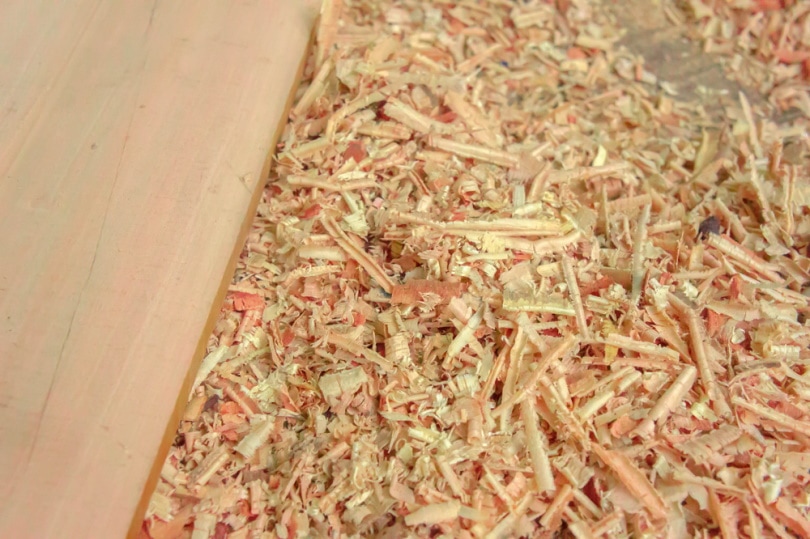What is Sapele Wood? Properties, Characteristics & Uses
-
- Last updated:

Most people have a tendency toward a particular type of wood. If you are a person that is fond of oak or cherry wood, the availability is usually not a problem. If you like mahogany, however, you know the rarity of genuine mahogany wood from Central and South America. Many woodworking hobbyists, cabinet and musical instrument makers, and DIYers are choosing to use sapele wood from Africa as an alternative. Sapele wood comes from the sapele tree of West African countries, including Tanzania, Nigeria, and Ghana.

What is Sapele Wood?
The reddish-brown wood darkens with age, like mahogany. It is also durable and has similar grain patterns.
Sapele wood, also referred to as sapele mahogany, is increasing in popularity. It can be used for interior or exterior projects and has many similarities to mahogany. Like other tropical woods, sapele is resistant to insects, weather, and rot. Sapele can be waxed, oiled, stained, polished and varnished.
Widespread across Africa, the sapele is a natural hardwood tree ranging in height from 100–150 ft tall. The grain in the wood from a sapele tree is straight, wide, and long. The quilted and wavy patterns in the grain give the wood an exotic look. However, the interlocking grain of the wood can cause tear-outs when you are using a router or planer on the wood.

- Tree Size: 100–150 ft
- Diameter: 3–5 ft
- Dried Weight: 42lbs/ft3 (670kg/m3) average
- Janka Hardness: 1,410 lbf (6,280 N)
- Specific Gravity: (basic, 12% MC) .50, .67
- Elastic Modulus: 1746,000 lbf/in2 (12.04 GPa)
- Modulus of Rupture: 15,930 lbf/in2 (109.9 MPa)
- Crushing strength: 8,750 lbf/in2 (60.4 MPa)
- Shrinkage Radial: 4.8%, Volumetric: 12.8%, Tangential: 7.2%, T/R Ratio: 1.5
- Wood Type: Hardwood is wood from a tree with broad leaves, such as ash, beech, or oak.
- Treatability: Difficult
- Density (mean, Kg/m3): 640
- Grain: Interlocking and wavy
- Texture: Uniform and very fine, giving it a natural luster
- Drying: Medium. Sapele is partially dried in Africa. The air-drying process is done in the US, Asia, and Europe. For sapele to be durable and stable, it needs to be dried properly.
- Durability: Moderate. Highly resistant to rot and insects.
- Maintenance: Low
- Price: Medium but increasing due to the limits on commercial exploitation.
- Colors: Reddish-brown (resembles mahogany)
- Odor: When working with sapele, the scent is similar to cedar. It does not have an odor when finished.
- Workability: Susceptible to tear-outs, staining, and discoloration. Accepts glue, nails, and screws and finishes nicely.
- Sustainability: Sapele wood is on the International Union for Conservation of Nature’s Red List of Threatened Species (IUCN) list.
Uses
For interior projects, sapele or sapele veneer wood is commonly used on cabinets and furniture. It is a popular choice for woodwork, bathroom doors, window frames, flooring, and cabinets.
The durability and weather-resistant properties make it an excellent choice for outdoor furniture and building boats. Sapele is also popular among electric and acoustic guitar manufacturers.

Conclusion
If you are considering an indoor or outdoor project, sapele is a quality wood that will give your project an exotic look at a fraction of the cost of mahogany. Sapele is a fantastic choice for projects that are big or small!
You might also like:
- What is Cocobolo Wood? Properties, Characteristics, & Uses
- Can You Clean Wood With Vinegar? Is It a Good Idea?
- 10 Varieties of Mahogany Wood for Your Next Project
Featured Image Credit: Roberto Pascual Gomez, Shutterstock

